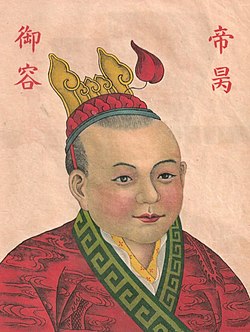If there’s one kind of oolong that has the most fantastical origin story, it’s Dan Cong. A name that translates as “single bush or tree”. The story of this tea has its roots in the last days of the Southern Song dynasty. Around 1279 C.E., Zhao Bing (or Song Di Bing)—the final child emperor—had fled from Mongols with his entourage to the Fenghuang (Phoenix Mountain) region of, what is now, Guangdong Province.
 As legend has it, the local tea farmers fed the young emperor tea leaves as he wandered the countryside. These bushes were a hybrid off-shoot of Shui Xian, a known cultivated [likely] hailing from Wuyi Shan, all the way to the northeast. Allegedly, leaves revitalized the young emperor, staving off his exhaustion from the exile. Alas, the Mongols eventually did catch up to him, and he—and his guardian—jumped off a cliff.
As legend has it, the local tea farmers fed the young emperor tea leaves as he wandered the countryside. These bushes were a hybrid off-shoot of Shui Xian, a known cultivated [likely] hailing from Wuyi Shan, all the way to the northeast. Allegedly, leaves revitalized the young emperor, staving off his exhaustion from the exile. Alas, the Mongols eventually did catch up to him, and he—and his guardian—jumped off a cliff.
Afterwards, the tea trees in the region—that hadn’t been delineated as cultivar specific—took on a new name; Song Zhong, further emphasizing its connection to the late Southern Song emperor. Hundreds of years after that, further refinement of tea processing in the region occurred. Aside from growing Song Zhong from seed, Fenghuang farmers also developed cultivated varieties based upon difference leaf fragrances. By isolating these, they bred from grafts to further duplicate those aromatic profiles.
In the late 1700s, Dan Cong was officially listed as an imperial tribute tea, and the Fenghuang region its forebears. If it wasn’t from the Phoenix Mountain, it wasn’t Dan Cong. To this day, that’s still the case. As to how many “fragrance cultivar” sub-categories there are? I . . . have no idea. But there’s one I see more than any other, probably because it’s the most ubiquitous.
Mi Lan Xiang (“Honey Orchid Fragrance”) Dan Cong.
